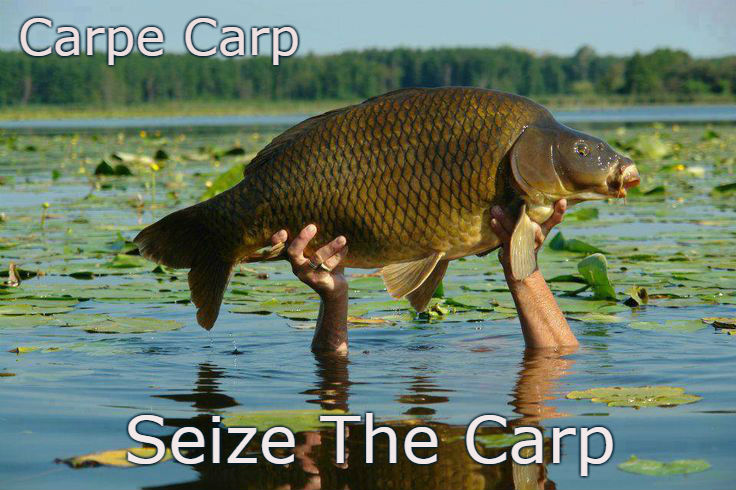
All around the world, the common carp (Cyprinus carpio) is a very popular game fish. South Africa is no different. We have an abundance of carp venues all over the country and thousands of anglers try their luck on a daily basis.
Carp is also one of our favoured target species. We often do very well but sometimes we mysteriously get very few bites even though the conditions seem perfect. So we started reading up on carp behaviour and learnt a lot about these fascinating fish.
In this post, we’ll try to share all the knowledge we’ve gained from an angler’s point of view. It’s helped us, and hopefully, there is something in here that’ll help you too.
General
1. Habitat
2. Spawning
3. Detecting food
4. Diet
Conditions
1. Water temperature
2. Wind
3. Air Pressure
4. Rain
5. Oxygen
6. The moon
Behaviour
1. Jumping and flopping on their sides
2. Jumping straight up and down, head and shouldering
3. Porpoising (dolphin style)
4. Thrashing \ milling on surface
5. Gulping at surface
6. Lazily lying under surface
General
1. Habitat
We all know carp thrive in deeper freshwater lakes and dams, they are quite comfortable in rivers but prefer slower-moving waters. But where exactly can they be found in the water column?
Carp have 4 basic requirements: food, warmth, oxygen, and shelter. And they will seek out areas that satisfy all of these things. Therefore we can assume the following:
Summer: Oxygen levels are lower and the water is warmer so carp will migrate to shallower areas where there is more oxygen.
Tip: Look for areas of shelter if possible. And try to be on the windward shore (blowing towards you), this is where the highest concentration of oxygen and food will be.
Winter: Oxygen levels are higher but the water is colder so carp will migrate to the deeper parts of the lake or dam they inhabit where the water will be warmer. This is however dependent on a food source of course.
Tip: Try to identify the deeper areas and target those. Immediately go fishing if the temperature rises for a few days 🙂
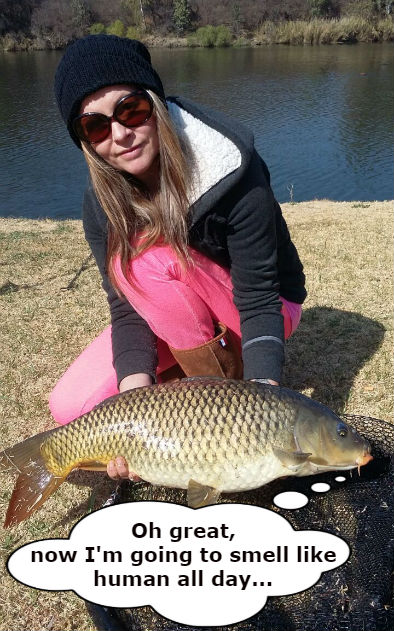
2. Spawning
Carp spawn during spring to early summer (August-October), when the water temp reaches between 16-20 degrees. This is so the young carp have enough time to build up fat reserves before the next winter. Sparked by ideal conditions carp can even spawn multiple times per year.
You may have seen carp thrashing around among grass beds. Besides actual spawning activity, this serves to spread eggs around a certain area to increase chances of survival.
Carp are generally not interested in feeding during the spawn. You may find some fish biting but a lot less than before and after the spawn. It might be a good time to leave them be and not disturb the production of the next generation. Don’t try to catch carp thrashing in shallow water among the grass, you won’t be successful and might do a lot of harm. You can still catch carp but in the conventional areas, away from the spawning activity. 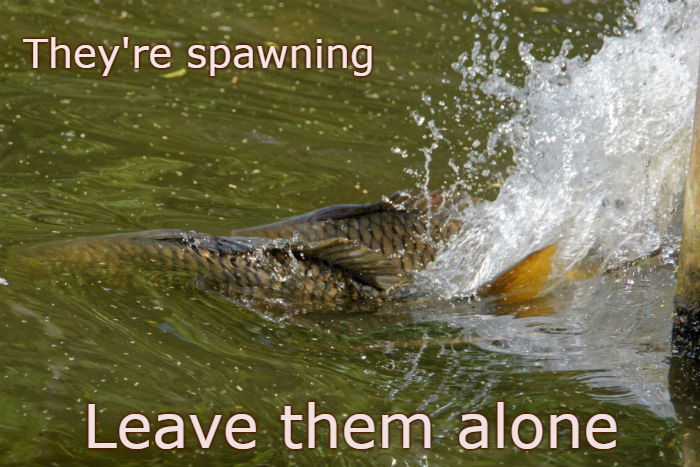
3. Detecting food
Carp have very good olfactory senses (read smell), they can detect any dissolved substances in the water and quickly determine if it is a good food source. They also have a very sensitive mouth lining which quickly chemically senses whether food is good or bad.
4. Diet
Carp are omnivorous. They will eat algae, soft plant roots and of course all the baits we use (corn, tiger nuts, dough etc.). But they are also after more animated prey like aquatic snails, small crustaceans, maggots and worms (blood or earth). They will even dig into silt to get to bloodworms.
Conditions
1. Water temperature
Water temperature has a profound effect on carp behaviour. Here’s a summary of what we’ve learnt, these numbers can differ depending on your climate:
- below 8 °C – at this temperature carp will hibernate in groups in deep water
- 8 – 18 °C – not great but there should be some carp activity
- 18 – 28 °C – ideal water temperature for feeding carp
- above 28 °C – carp might be distracted by low oxygen levels
2. Wind
Wind is also very important. Apparently, carp will follow the wind direction and congregate on the windward shoreline. Here are a few reasons why:
- wind causes undercurrents that push food in the windward direction
- it also stirs up food in shallower parts and the carp know this
- as small waves crash near the shore, it raises the oxygen levels making carp more comfortable and more likely to feed
3. Air pressure
Another important factor is the effect of air pressure on a fish’s swim bladder. Here’s how I understand it:
Low: Air in the fish’s swim bladder expands and causes discomfort. Carp tend to go deeper (more water pressure) or stop moving and are less interested in feeding.
High: Carp feel more comfortable, become more active and feed on more animated things.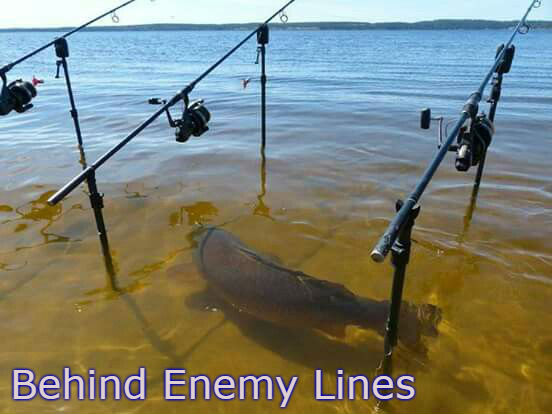
4. Rain
Rain is always a good thing, it increases the oxygen in the water which makes carp more active and excited about feeding. In warm conditions rain will cool the water which also leads to more activity.
5. Oxygen
Carp are very adaptable and can survive in low oxygen water (0.3-0.5mg/l) but ideally, as with most fish, prefer oxygen rich waters. We’ve noticed that when there is a lot of boating activity (ie. Bronkhortspruit Dam) we tend to get many more bites. Surely the boats annoy the fish but also deposit a lot of oxygen in the water causing more feeding activity.
Carp gulping for air at the surface often means there is little oxygen in the water. A very bad sign.
6. The moon
As far as we can tell the moon has no effect on carp behaviour. Solunar tables mostly pertain to tides which obviously don’t apply to regular inland lakes.
Behaviour
Carp often come to the surface and depending on their behaviour you can tell a lot about their current mood. Here’s what we know so far:
1. Jumping and flopping on their sides
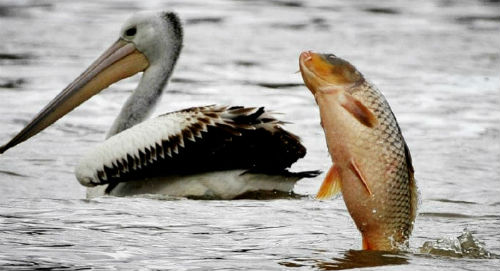
What it means: The carp is possibly trying to deflate its swim bladder. This is most likely because they are feeding very deep and need to get rid of the excess gas as it rises. This behaviour is mostly seen in larger, deeper lakes. In shallower water, carp would not need to do this and the jumping has a different purpose like clearing silt\parasites from their gills.
Tactic: Casting where you see fish is always a good tactic. But in our experience, this behaviour wasn’t always a good sign. Possibly because the air pressure is low and their swim bladders have enlarged to become uncomfortable.
2. Jumping straight up & down, head and shouldering
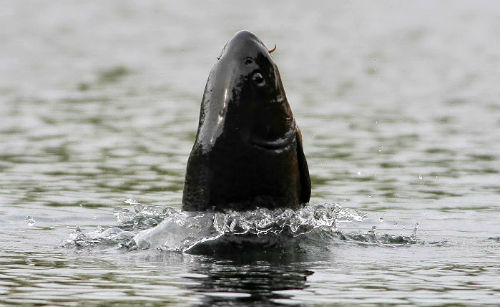
What it means: The carp is trying to either force more air into its swim bladder, or it is trying to get rid of excess particles\parasites\silt in its gills or mouth. This almost always means it’s feeding right there in silt \ mud to get food.
Tactic: This is usually a very good sign and almost definitely means the carp are feeding there. Try to get your bait in the exact area where this activity is happening.
3. Porpoising (dolphin style)
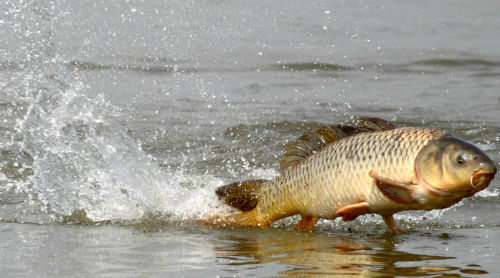
What it means: This is more of a social behaviour, it probably means there is a school of carp moving together in a certain direction.
Tactic: Try to spot this behaviour coming towards you by looking for more than one carp doing this. Then try to cast in their path to maybe intercept this feeding school. This can be very lucrative if done correctly. Otherwise throwing a Zig rig in their general path could be effective too.
4. Thrashing \ milling on surface
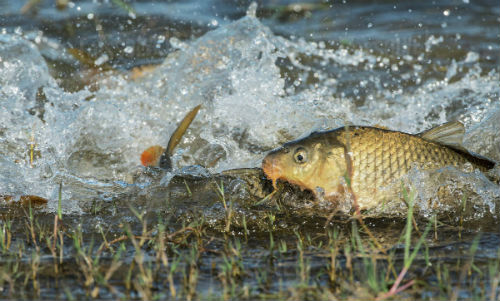
What it means: The carp are most likely spawning, especially if this behaviour is potted among grass beds.
Tactic: Don’t bother these carp, they have other things on their mind and feeding is not one of them. Rather try your luck in conventional areas.
5. Gulping at surface
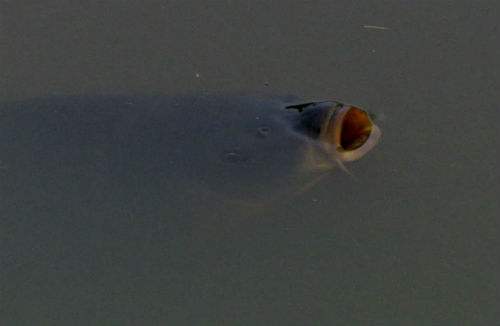
What it means: There is too little oxygen in the water and the carp are forced to gulp at the surface.
Tactic: Not a good sign, a Zig rig might be your best option.
6. Lazily lying under surface
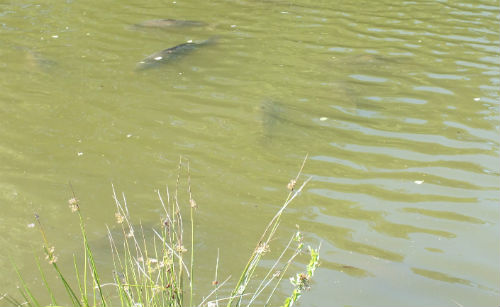
What it means: The carp are resting, they need to do this to restore energy levels. In summer they will rest at the surface which is also known as basking. In winter they will rest on the bottom unless there are low oxygen levels.
Tactic: Ignore these carp, cast in conventional areas.
Summary
That’s it, all our combined wisdom from reading and summarizing a dozen similar posts. If you have any further info that could be useful, or if you would like to dispute any of the information please feel free to contact us. We are constantly learning and any contributions are very welcome…
Further reading:
Here’s a very comprehensive article by Ontrack Fishing covering everything you need to know about carp fishing and more…
https://www.ontrackfishing.com/carp-fishing-tips/

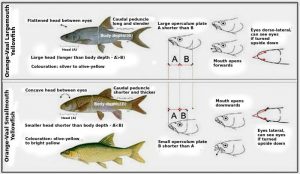
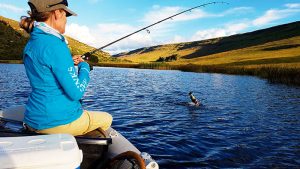
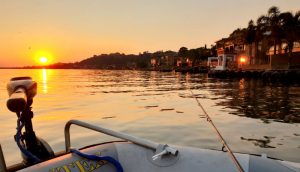
This was good reading. Very nice.
Thank you.
Very interesting read, when I go to Midmar every time there is different activity. Somedays nothing. I found that when we sent on Sunday the 6 November it was very hot, but water was icy. NO fish activity throughout the entire day.
Tried Strawberry Meal, mealies, banana essence, even chicken livers, almond essence, but nothing was working.
After reading these articles, I can now understand the effect water temperature changes has on fish.
Thanks Chantelle, I’m very glad it was helpful. Fishing can be confusing sometimes. Everything seems to be exactly the same from one day to the next but the fish refuse to bite some days 🙁